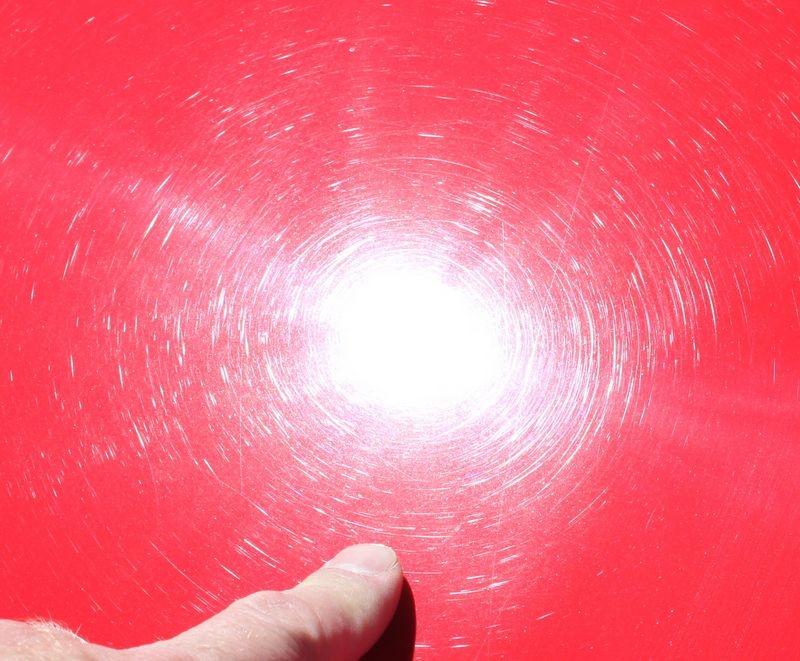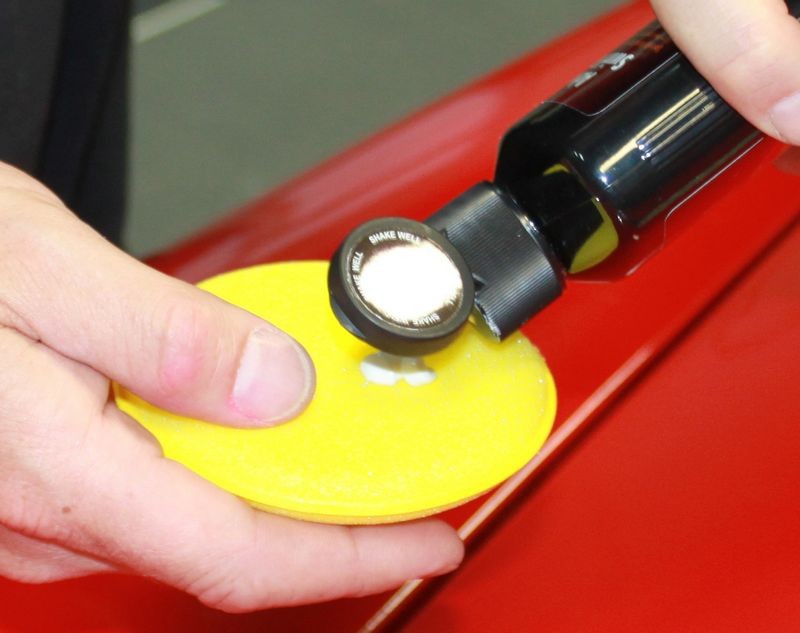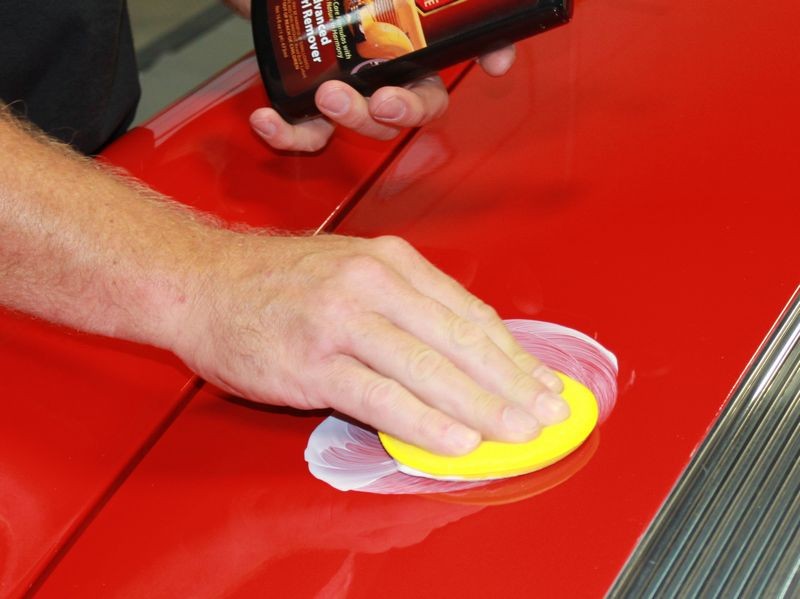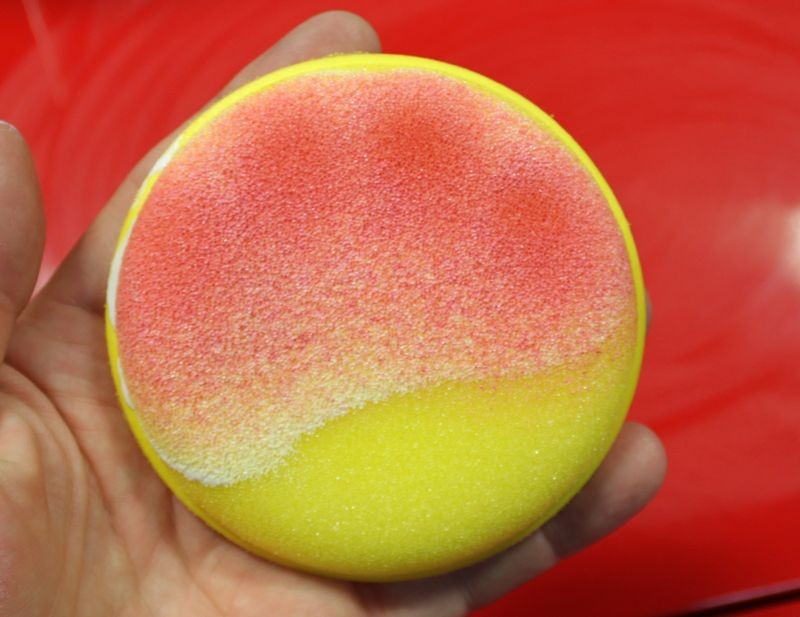 Thanks: 0
 Likes: 0
 Dislikes: 0
-
Super Member

1985 Mercedes help
I have a guy with a 1985 mercedes that is a garage queen. The paint is in good condition but he wants all the fine scratches that have accumulated over the years to be removed. My question is on a 1985 mercedes is that a single stage paint a normal clear coat or a ceramic clear coat? Its the original paint btw. Thanks guys.
-
Re: 1985 Mercedes help
I would think it would be single stage paint i dont think clear came out until the early 90s but i could be wrong
 Originally Posted by brondondolon

I have a guy with a 1985 mercedes that is a garage queen. The paint is in good condition but he wants all the fine scratches that have accumulated over the years to be removed. My question is on a 1985 mercedes is that a single stage paint a normal clear coat or a ceramic clear coat? Its the original paint btw. Thanks guys.
-
Re: 1985 Mercedes help
This might be useful to you. As you can see, Mercedes had clearcoat metallics in 1985.
1985 Mercedes-Benz All Models Locate Color Identification Plate Color Information Source FAQ'S.
Color Color Description Color Code
Black DB-040
Anthracite Grey Metallic Clearcoat DB-172
Black Pearl Metallic Clearcoat DB-199
Diamond Blue Metallic Clearcoat DB-355
Sand Beige DB-444
Mocca DB-459
Champagne Metallic Clearcoat DB-473
Manganese Brown Metallic Clearcoat DB-480
Desert Red Metallic Clearcoat DB-540
Signal (Fire Engine) Red DB-568
Cabernet Red Metallic Clearcoat DB-587
Light Ivory DB-623
Manila Beige DB-681
Pastel Beige DB-684
Matt Gray Metallic Clearcoat (matt) DB-7007
Smoke Silver Metallic Clearcoat DB-702/9702
Astro Silver Metallic Clearcoat DB-735
Classic White DB-737
-
Re: 1985 Mercedes help
A follow-up to my previous post, just in case the car you are about to work on has metallic paint. I seem to recall that years ago there were issues of Mercedes metallic paints developing fine cracks in the clearcoat. Some of the fine scratches you see could be cracking in the clearcoat. I haven't owned a Mercedes for many years not, so don't follow such issues anymore.
-
-
Re: 1985 Mercedes help
 Originally Posted by brondondolon

but he wants all the fine scratches that have accumulated over the years to be removed.
Fine or shallow scratches shouldn't be a problem but you might want to read the below so you can be prepared to answer any questions about deeper scratches.
RIDS - The Definition of RIDS and the story behind the term...
As I point out in the artible above....
RIDS = Random Isolated Deeper Scratches
RIDS
Random Isolated Deeper Scratches. These type of scratches come from normal wear & tear and there is no pattern to them. RIDS are like Tracers in that they are deeper scratches that show up after the shallow scratches have first been removed through a machine or hand buffing process, usually with a compound or paint cleaner. After the shallow swirls and scratches have been removed, any deeper scratches that remain will now show up like a Sore-Thumb to your eyes because there are no longer thousands of lighter, more shallow scratches camouflaging them.
I coined this term back in the early 1990's, before discussion forums existed. Note vBulletin wasn't released as a pay-for-script until 1999/2000, see this article here,
Discussion Forums - A relatively "new" invention...
Here's the story behind the story for the term R.I.D.S.
For most people working on a daily driver, the normal process is to,
- Wash and dry the car
- Inspect the paint by feeling it with your clean hand to check for above surface bonded contaminants
- Inspect the paint visually by looking at in in bright light for swirls and scratches
- Clay the paint if needed
- Remove the swirls if needed
- Polish to a high gloss
- Apply a wax, paint sealant or hybrids
Make your final wipe and then stand back and admire the results...
Like most detailers, I would evaluate the finish on a customer's car, explain to them the process I would use to remove the defects and restore a show car finish from the Test Spot to the First Step Process and all the way up to the LSP or the Last Step Product.
In most cases, after the correction step would be finished, that means after the paint has been compounded and for me that would usually be after buffing the paint using my trusty, dusty Makita 9207SPC rotary buffer and removing as many defects as I felt comfortable with, at that point the RIDS would show up and it would be at this point that I would show the customer the deeper defects and then educate them on paint thickness and why it would be unwise to attempt removing the remaining deeper defects. Sometimes I would re-enforce this education segment with where the deeper defects came from, (them and the way they treat the car or from the person they bought the car from), and to avoid this type of problem to be more careful with the paint in the future because paint is thin and that's the fault of the car manufacture, not the detailer, (me). 
So that's where I started using the term, educating customers.
60 Eyeballs
The topic also comes up in all the classes I've taught and continue to teach as most of the focus of these classes is showing people how to move from working by hand to working by machine. I know from experience, that if I see the RIDS show up in my customer's cars, then the students are going to see the RIDS show up when they work on their cars, so it's only a win/win situation to educate them on RIDS at the same time you're teaching them how to machine clean and polish paint.
The amazing thing!
There's always someone in every class that after you remove the shallow swirls and scratches will closely look at the finish and because the RIDS will now stand out like a Sore-Thumb, they will point to the RIDS and say something uniformed like,
"Hey look, your polisher put some scratches into the paint!"

This is so ridiculous, but in front of anywhere from 20 to 50 people with the average being 30 people or 60 eyeballs, you have to use kids gloves to gently explain what just happened, in other words, that right there in front of all their eyeballs you just removed all the zillions of shallow swirls and scratches surrounding the deeper scratches and now that the shallow swirls and scratches are removed the remaining deeper scratches now show up like a Sore-Thumb because there are no longer zillions of shallow swirls and scratches surrounding them acting to camouflage them from their eyes.
Once you explain this, 99.9% of the people in the class, watching the live demonstration, usually on a thrashed black car can understand and internalize the concept and know what to expect when they go home and work on their car in their garage. Connecting the dots for people like this results in the removal of panic, fear and confusion and is a win/win deal for everyone involved.
When do RIDS Show Up?
As mentioned above in my accounting of a story that plays itself out with almost ever customer and most if not all detailing classes, RIDS show up after you perform the first cleaning or compounding step.
In most cases, and especially if the paint has been neglected or abused, the paint will be filled with hundreds of thousands of light or shallow swirls and scratches. At this point, when you look at the paint you don't really see the RIDS because the are masked or camouflaged by the hundreds of thousands of deeper scratches.
AFTER you compound or use some type of paint cleaner or cleaner/polish over the paint, then wipe off the residue... then the RIDS show up.
This isn't always true for all RIDS as deeper RIDS will show up easily to your eyes even when surrounded by hundreds of swirls, like this... note the straight-line scratches in a few random directions included in the mass cobweb swirls throughout the paint.

After you remove the majority of shallow swirls, scratches and other below surface defects out of the paint and then wipe-off the residue and inspect the paint, now that the zillions of shallow defects will have been removed, the only defects left will be the random, isolated deeper scratches and because there's no longer zillions of swirls and scratches surrounding the deeper scratches they stand out like a sore-thumb and are easy to see.
Random
The reason I used the word random is because they are random, and this is an important distinction because sometimes people confuse RIDS with other types of below surface defects, for example, sometimes people will refer to Tracers and RIDS but this isn't accurate.
Tracers are, or at least should be, scratches in the paint that are all in a straight line going in the direction a person was moving their hand when wet-sanding.
RIDS are instilled through normal, wear-n-tear from a car being used as a daily driver and as such, deeper scratches are instilled in hap-hazard, random ways, thus the choice of the word Random.
Isolated
This just means they're usually by themselves, not a part of a group or pattern of scratches or below surface defects
Deeper
This is kind of obvious but RIDS is about the deeper scratches that don't come out during the first and sometimes second or even third compounding or correction step because they're just too deep to be removed safely. At this point you need to learn to live with them or educate your customer that they are too deep to remove safely and they either need to learn to live with them or consider their other options, like having the affected panel or the entire car re-painted.
Scratches
RIDS are mostly about the deeper scratches that remain after the compounding and/or polishing steps but it could also include any deeper defects that are not removed such as Type II Water Spot Etchings, Tracers, Pigtails, etc., basically anything that remains after you've made the decision you've worked a panel as much as you're going to work it and anything that hasn't bee removed is not going to be removed. (At least by you).
That's the story behind the term RIDS; I've seen people type it RDS and leave out the letter "i" but it's technically RIDS
Here are some related threads...
RIDS and Feathersanding - A Highly Specialized Technique by Mike Phillips
Tracers Tracers - RIDS - Pigtails - Cobweb Swirls - Rotary Buffer Swirls - Holograms - Water Spots - Bird Drooping Etchings - Micro-Marring
The above is also covered in my how-to books.

Similar Threads
-
By Compulsive Detail in forum Show N' Shine
Replies: 11
Last Post: 03-01-2018, 01:02 PM
-
By mylkman in forum Ask your detailing questions!
Replies: 3
Last Post: 10-11-2016, 10:00 PM
-
By Threehundredc in forum Show N' Shine
Replies: 12
Last Post: 04-18-2013, 11:04 PM
-
By TundraPower in forum Show N' Shine
Replies: 17
Last Post: 03-20-2013, 08:52 PM
-
By Gary Sword in forum Show N' Shine
Replies: 20
Last Post: 09-21-2009, 09:29 AM
 Members who have read this thread: 0
Members who have read this thread: 0
There are no members to list at the moment.
 Posting Permissions
Posting Permissions
- You may not post new threads
- You may not post replies
- You may not post attachments
- You may not edit your posts
-
Forum Rules
|
| S |
M |
T |
W |
T |
F |
S |
| 31 |
1
|
2
|
3
|
4
|
5
|
6
|
|
7
|
8
|
9
|
10
|
11
|
12
|
13
|
|
14
|
15
|
16
|
17
|
18
|
19
|
20
|
|
21
|
22
|
23
|
24
|
25
|
26
|
27
|
|
28
|
29
|
30
| 1 | 2 | 3 | 4 |
|












 Thanks:
Thanks:  Likes:
Likes:  Dislikes:
Dislikes: 

 Reply With Quote
Reply With Quote








Bookmarks